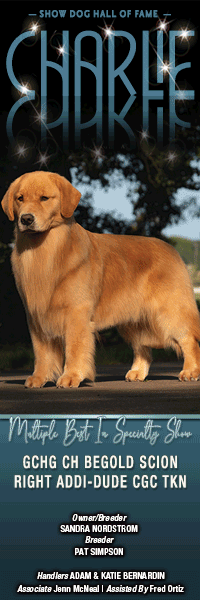Another Benched Show Bites The Dust

Tommy Glassford handling Irish Setter to Best in Show at Detroit Kennel Club 1970 - Photo Courtesty of The Detroit Kennel Club
By Amy Fernandez
As The Canine Chronicle first reported, the Detroit Kennel Club has announced the cancellation of their March, 2014 event due to lack of corporate sponsorship for the event.
Detroit has retained its place among America’s dwindling handful of benched shows. It has hosted benched shows since the club was founded in 1916. However, its history of organizing dog shows dates back to the 1830s. Detroit was thriving long before Michigan became a state in 1837. The advent of the Erie Canal and rail lines fostered the phenomenal growth of local industries like mining and steel production. By the late nineteenth century, Detroit was one of the largest Midwest cities and it was very rich. Its affluent residents poured money into public buildings, cultural institutions, and projects to promote local commerce. By 1900, dog shows were a major feature of its local state fairs.
In 1910, the automotive industry began supplanting the city’s traditional economic strongholds. Detroit got richer and, from the start, the Detroit Kennel Club’s shows were lavish events thanks to its prosperous, dog loving club members. By 1920, its generous prizes, renowned judging panels, and comfortable venue attracted entries of 500, far larger than most Midwestern shows of that era.

Eugene Blake handling Afghan Hound to Best in Show at Detroit Kennel Club 1973 - Photo Courtesy of Detroit Kennel Club
During the club’s early decades, Henry Ford’s Highland Park Plant began luring skilled workers by offering unprecedented high wages. Detroit’s population soared to 1.5 million. More importantly, many middle class residents had disposable income, leisure time, and cars. Dog sports attracted legions of new fanciers. By the mid-1920s the show moved to the Detroit Convention Hall to accommodate its growing entries. In 1935, Detroit’s entries hit 1500 for the first time, and the auto industry ensured steady growth throughout the twentieth century.
A 1936 show report in the AKC Gazette said, “This is one of the few shows where no strings are attached to the money awards. Detroit giving far more unqualified money than any indoor exhibition outside of New York and Boston.” The Detroit Kennel Club attracted major handlers and top winning dogs throughout the ‘50s. It got even bigger after it relocated to Cobo Hall in downtown Detroit in 1964. Two years later, it broke into the top ten as one of the country’s largest shows. It had previously ranked 17th. That year, it pulled almost 500 additional entries, sending it to fifth place. For the first time, the club rented three halls in the venue to accommodate its panel of 21 judges and 14 rings for conformation, obedience, and special events.

Walter Goodman handling Ch. Glamoor Good News to Best in Show at Detroit Kennel Club in 1968 - Photo Courtesy of Detroit Kennel Club
That year, Bob Forsyth earned his fourth BIS at Detroit with the Old English Sheepdog Ch. Fezziwig Raggedy Andy. Two years later the club held its 50th anniversary show. As usual, they offered incredible trophies and cash prizes and attracted 3094 entries. Once again, they needed three halls to accommodate 16 rings and a record number of spectators. Walter Goodman handled his Skye, Ch. Glamoor Good News, to her third Best.
By then, Detroit had scaled its shows back to one day events, which became back-to-back shows in 1998. Detroit’s local economy has changed radically since the ‘60s, but the club remained strong. It held its 110th and 111th shows last March 2 and 3, and prides itself in the fact that its shows have always been benched. Many clubs have begun to add Meet the Breeds features to their shows as a way to showcase purebred dogs to spectators. This concept has been undeniably successful in that regard. But it cannot replace the traditional role of benched shows as an educational forum for fanciers. Many believe that the demise of benched shows contributed to the growing knowledge gap among today’s breeders, exhibitors and judges. We can’t afford to lose another one. It’s encouraging to know that Detroit fully intends to stage its 2015 show.
Short URL: https://caninechronicle.com/?p=32110
Comments are closed











